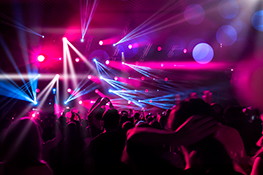Mastering Stage Lighting: A Comprehensive Guide for Professionals and Enthusiasts
Understanding the Fundamentals of Stage Lighting
Before diving into advanced techniques, it’s crucial to grasp the foundational elements of stage lighting. This includes understanding different types of lighting instruments – from Fresnels and ellipsoidal reflectors to LEDs and PAR cans – and their unique characteristics. We’ll explore the properties of light: intensity, color, distribution, and angle, and how these properties interact to create specific moods and effects. This section also covers essential concepts like color temperature, color mixing, and the use of gels and other color filters.
Designing with Light: Creating Mood and Atmosphere
This section delves into the art of lighting design. We explore how different lighting techniques can be used to establish mood, highlight key moments, and guide the audience’s attention. We’ll examine the principles of composition, contrast, and balance, and how these principles apply to stage lighting. Learn about using light to create depth, texture, and dimension on stage. We’ll also discuss the critical role of lighting in storytelling and enhancing the emotional impact of a performance.
Exploring Advanced Lighting Techniques
Moving beyond the basics, this section explores advanced techniques used by professional lighting designers. We’ll cover topics such as gobo projection, creating dynamic lighting cues, and utilizing automated lighting systems. Learn about the use of special effects, such as strobes, chases, and color washes, and how to effectively integrate these effects into your lighting design. We’ll also examine different lighting styles and techniques used in various performance genres, from theatre and concerts to corporate events and exhibitions.
Working with Lighting Equipment and Software
This section provides a practical guide to working with different types of lighting equipment, including consoles, dimmers, and lighting instruments. We’ll cover the setup and operation of lighting equipment, including safety procedures and best practices. We’ll also discuss various lighting control software options, their features, and how to use them effectively to create and execute complex lighting designs. This includes tutorials on programming lighting cues and troubleshooting common technical issues.
The Importance of Collaboration and Communication
Successful stage lighting is rarely a solo endeavor. This section emphasizes the importance of collaboration between lighting designers, directors, and other technical crew members. We’ll discuss effective communication strategies, the importance of clear communication during rehearsals and performances, and how to manage and resolve potential conflicts. The role of feedback and iteration in refining a lighting design is also explored.
Staying Current with Industry Trends and Technologies
The world of stage lighting is constantly evolving. This section explores current trends and technologies, including LED lighting advancements, wireless control systems, and the increasing use of virtual reality and augmented reality in stage production. We’ll discuss the benefits and challenges of adopting new technologies and offer guidance on staying updated with the latest innovations in the field.
Resources and Further Learning
This final section provides a curated list of helpful resources for aspiring and experienced lighting professionals. We’ll share links to relevant websites, books, and training programs, as well as a list of industry associations and organizations. This section is designed to help you continue your journey towards mastering the art and science of stage lighting.
At stagelights.in, we are committed to providing you with the resources and knowledge necessary to excel in the world of stage lighting. We hope this comprehensive guide has provided valuable insights and inspiration for your lighting endeavors. Contact us today to learn more about our range of high-quality stage lighting equipment and expert support.


 Auditorium Construction Services
Auditorium Construction Services 